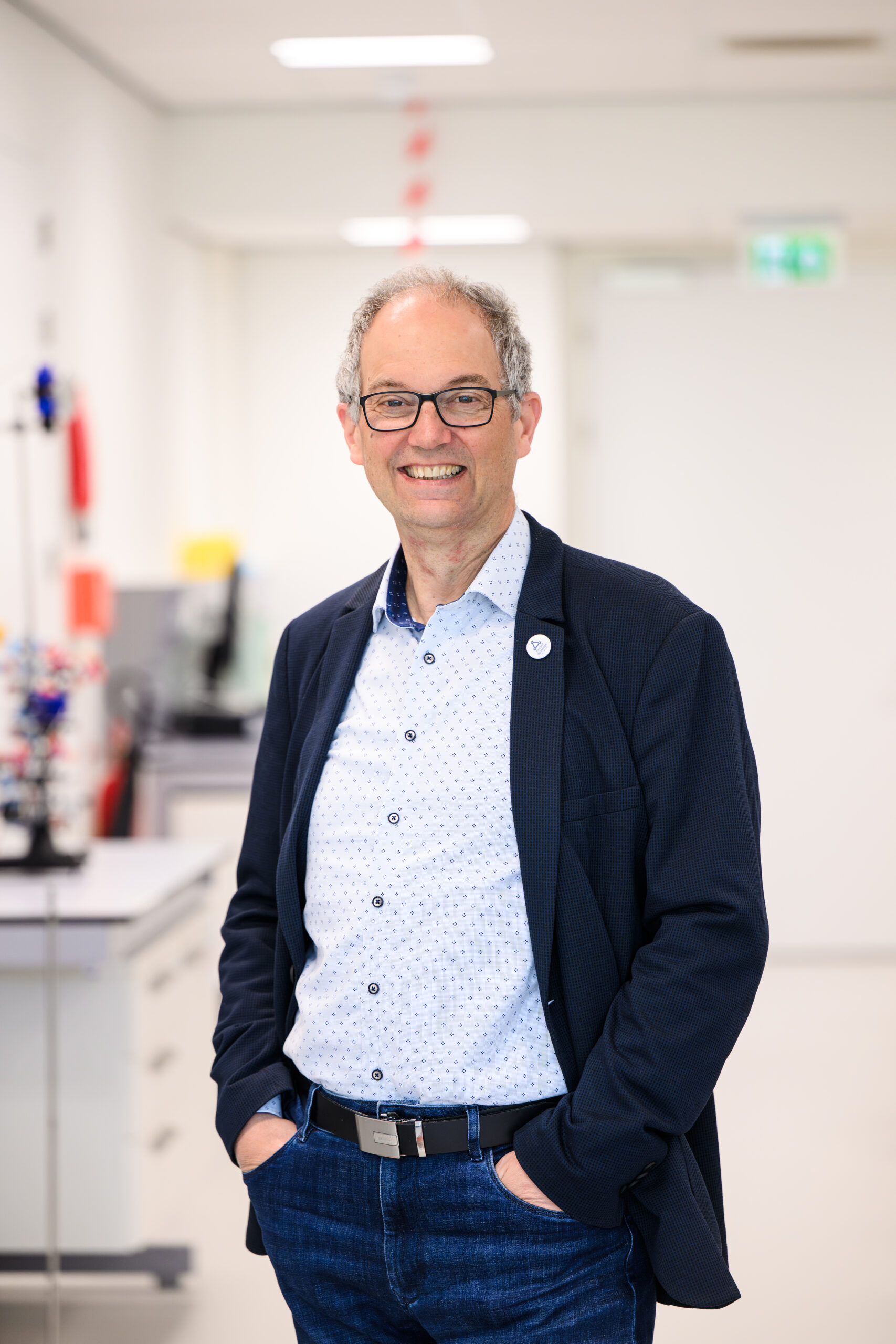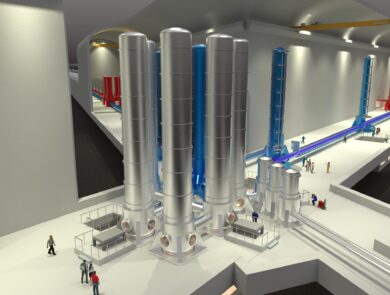New vacuum lab helps Einstein Telescope and entrepreneurs
The triangle of pipes, each 10 kilometres long, may not form the technical heart of the Einstein Telescope, but it is essential for the laser beams that are sent through them to measure the smallest gravitational waves. The installation of the pipes is one of the most expensive parts of the project. A brand-new vacuum lab at the Rheinisch-Westfälische Technische Hochschule (RWTH) in Aachen, Germany, will soon be developing new technologies for the construction of pipe systems. ‘This could also be of interest to other industries,’ argues project leader Professor Achim Stahl.
Over 600 million euros have been budgeted for the construction of the Einstein Telescope vacuum systems. Professor Achim Stahl, physicist and head of RWTH’s Physics Institute III B, can easily explain the size of this amount. ‘Each of the 3 10-kilometre pipe arms consists of 4 pipes, so we’re talking about 120 kilometres of pipe. A pipe section is a maximum of 18 metres long, the maximum size that fits on a truck. All those sections have to be welded together. Just calculate how many welds that involves: a whopping 6,600. Each weld is a very precise job that takes 5 technicians about 5 hours to complete, and everything has to fit to better than a millimetre. With a wall thickness of only 3 millimetres, the slightest deviation is taboo. Labour is enormously costly in this case – much more expensive than the stainless steel that we use.’

Special robot
Reason enough to search for a less costly method. Apparently, RWTH has now found one with the development of a special robot that can form pipes of up to 500 metres in length from sheets of steel underground. The robot welds the pipe sections with a laser beam under a vacuum, exactly according to the high standards required. ‘This technology has an essential advantage,’ Stahl explains. ‘Under vacuum, there’s no oxidation of the weld and therefore no post-processing is necessary at all, which would be very difficult in a 500-metre pipe underground. This welding technology isn’t completely new in the metal sector, but we need a movable vacuum that moves with the laser beam along the pipe. No one has any experience with this.’
That is why Stahl formed a team to develop the welding solution. This will take place in a brand-new lab yet to be built in Aachen, for which a 2-million-euro subsidy has been obtained. ‘We’re developing a kind of pot that we’ll place over the sheets to be connected. Then we slide it along the developing weld. This will create a vacuum, after which the laser can do its work without oxygen and therefore without oxidation. All in all, we’ll have a system that allows us to weld very quickly and precisely without the risk of seeding corrosion. Initial calculations indicate that the process will become at least half as expensive.’
More uses
The subsidy for the new laboratory has just been granted and Stahl hopes to get his team of researchers from Germany, Belgium and the Netherlands up and running before the end of the summer. ‘Entrepreneurs will also lend a hand,’ he adds. ‘For example, the Dutch company SBE in Eijsden is involved in the research. There’s a lot of interest in this technique in general. Vacuum welding with a mobile robot can be useful in many difficult circumstances. Think of the pipelines for gas and hydrogen. We’re also looking at the effects of coatings. In other words, we’re not only conducting this research for the Einstein Telescope, but also working on a broad innovation. Furthermore, our test laboratory will also be available to entrepreneurs who want to move forward with new vacuum technology, but don’t have the means for their own lab. Last but not least, it’s obviously relevant for specific knowledge institutes, researchers and students as well. That’s what makes the involvement of RWTH in such a large project as the Einstein Telescope so interesting.’

BeamPipes4ET
How can you install 500-metre vacuum pipes underground in one piece? The BeamPipes4ET project is working on this idea.
Seven parties are working on it under the leadership of the Rheinisch-Westfälische Technische Hochschule (RWTH) in Aachen, Germany. From Belgian Limburg, there are the companies Aperam and Werkhuizen Hengelhoef, both based in Genk. The partner in Dutch Limburg is SBE in Eijsden, and the welding company FEF is the partner from the Aachen region. In addition to RWTH, the universities of Hasselt and Antwerp are also involved in the project.
The idea is to avoid having to transport enormous pipes by road in the future. It is much more sustainable and expected to be less expensive to produce vacuum pipes underground. To this end, rolls of sheet steel will be brought into the underground tunnel of the Einstein Telescope, where they will be rolled into round pipes and welded.
If the BeamPipes4ET project is successfully completed, it will make a major contribution to the sustainable construction of the Einstein Telescope. After all, it will reduce the number of logistical movements and the nuisance caused by transporting large pipes by road. In addition, the partners in the project also see opportunities for applying the idea to other pipeline projects in the future.


